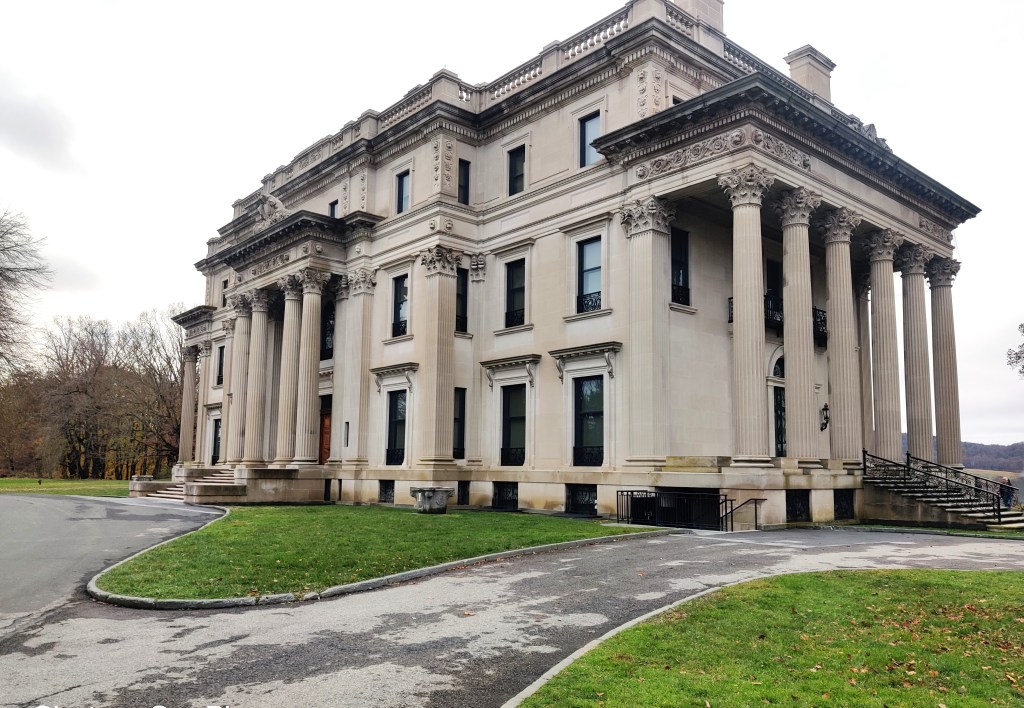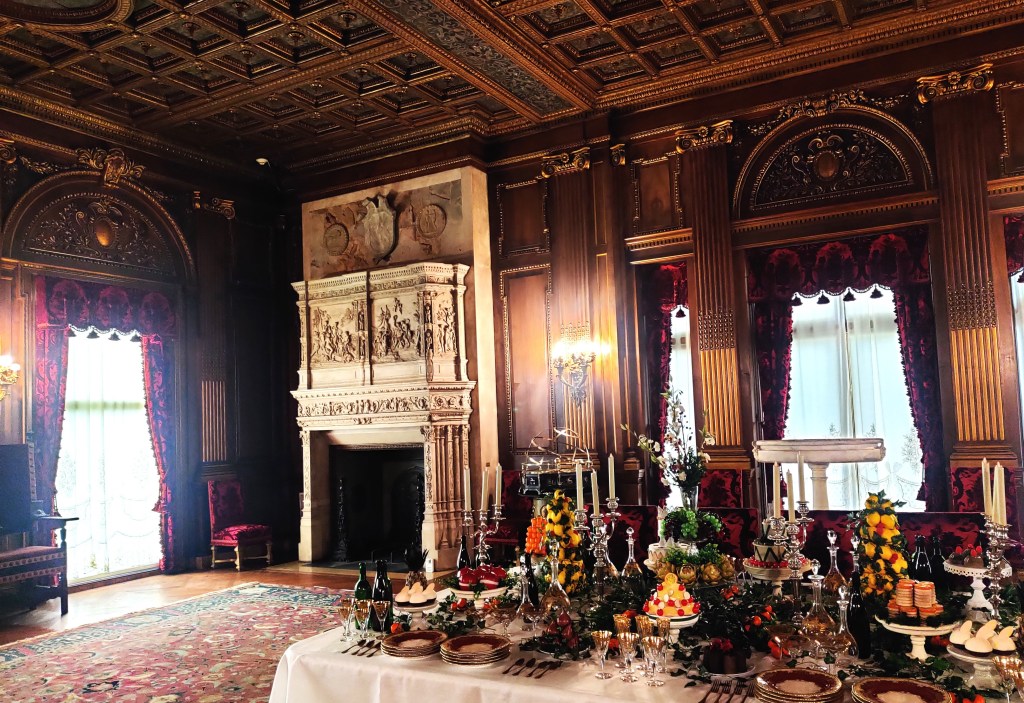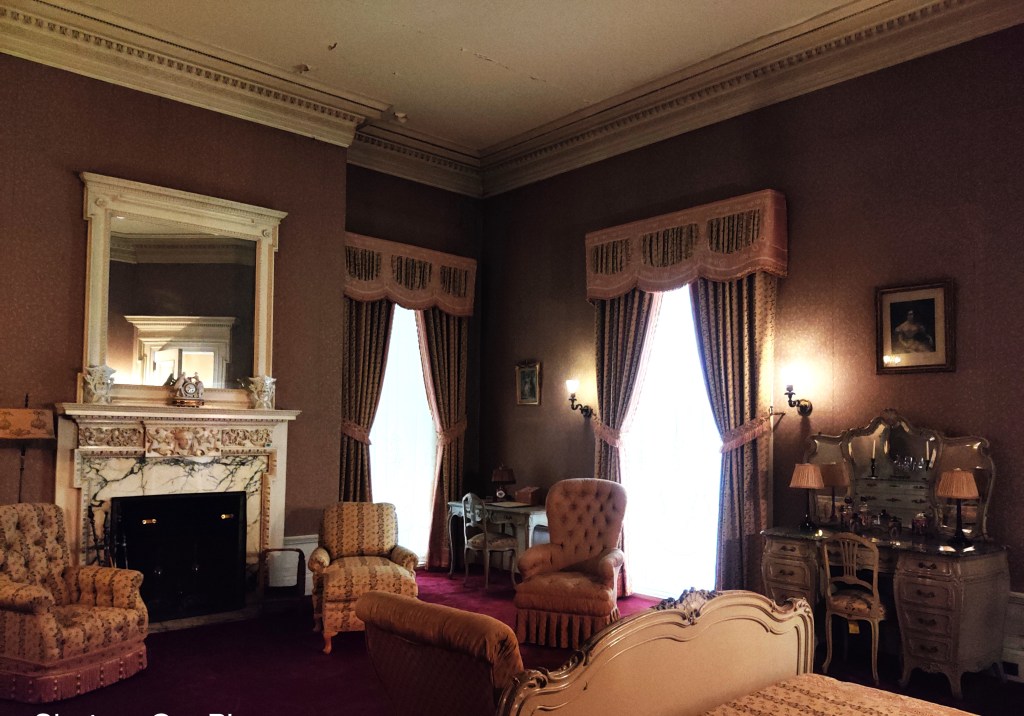
Vanderbilt Mansion today
Wishing all Readers merry Christmas and a great and purposeful 2024!
1938
President Franklin D. Roosevelt was staying in his favoured Hyde Park home. An early riser, he was standing by the window allowing the early aura to caress him. The low hung clouds, changing hues from the morning sun, glistened shades of orange as they floated by.
The rather modest Springwood estate had been home to President Roosevelt since birth. As he looked out at the estate’s trees and greenery, in his mind’s eye he was grappling with more weightier subjects. Coming at the helm of affairs five years back during the great depression, he had steered this vast land through the New Deal and 3 R’s reforms which he believed had allowed for people to regain faith in themselves, leading to employment rising and recoveries in Agriculture, Industry and Banking. However, once again, the country was facing production and profit declines coupled with rising unemployment. Arrayed with this threat of depression rearing its head, was the larger danger of the ongoing European conflict escalating out of control and engulfing the United States too. Roosevelt’s preferred policy to keep the US neutral was coming under increasing strain with both France and Britain pleading for US involvement against Adolf Hitler and Germany.
With an effort, the President shifted his mind from the above grim thoughts. He loved to look at the trees flourishing all around, now grown from the saplings he had been painstakingly planting for over a quarter of a century. Just a few days back, he had come to know that Mrs. Margaret Van Allen, the owner of the estate in the north, was hobnobbing with land developers to sell off the property. Having witnessed the birth of the Vanderbilt estate in his teens, he had a certain attachment to it.
President Roosevelt asked for his specially designed Ford Phaeton to be brought onto the driveway; he loved driving the car around Hyde Park. Followed by his security in a separate vehicle, he was soon on his way to the Vanderbilt mansion a few miles to the north.
“Mr. President, this is indeed an honour”, gushed Margaret Van Allen. “I just got a call an hour back about your visit, so do pardon any lack of…….”
“Mrs. Allen, it is I who needs to apologise for this unwarranted and sudden intrusion”, President Roosevelt responded with his usual grace. “I will come to the point. I understand you want to sell the estate. Your beautiful home has always held a special place in my heart. It is not only the magnificence of this mansion which I saw built as a teenager, I knew your aunt Louise and uncle Frederick well. They were so passionate and proud of their home. The Vanderbilt estate is the soul of Hyde Park. If it gets divided and sold off in parts, the casualty would not only be Hyde Park but the wonderful collection of trees. I would hate to see that happen….”
The President’s voice seemed to trail off as if coalescing with some deeper thoughts.
“I dream of Hyde Park the way it has been since my childhood. I plan to will my own estate at Springwood in its entirety to the American people. That way it’s past heritage would be preserved for future generations. May I also request you to do the same. That way the entire Hyde Park area would remain preserved”.
Margaret Van Allen felt elated at being asked by the President of the United States to join him in such a noble cause. She promised to consider the proposal seriously.
As President Roosevelt was leaving on the expansive circular driveway, he could not but help admire the beautiful array of trees and plants which Frederick Vanderbilt had so lovingly nurtured over decades.
**
Present
We could not help but admire the trees and the gardens as we drove on the circular driveway to the car parking area.

We were visiting the Vanderbilt mansion, the national historic site in the Hyde Park area on the banks of the Hudson River. We had heard impressive accounts about the place and were curious to know more. Parking our car, we strolled to the small chalet like building which housed the National Park Service (NPS) office, the mansion was visible at some distance. From the French windows in the rear, one got the first views of the flowing Hudson; the in between park area was a golden abundance of fallen leaves, glistening in the autumn sun.

Hudson river banks in the autumn
How the NPS got into the place is an interesting story. More than eight decades back, Margaret Allen, the niece of Frederick Vanderbilt, moved by President Roosevelt’s vision, decided to handover the estate to the Government. The US Congress approved the acquisition and the expansive park with the mansion was purchased by the NPS against a consideration of one dollar!
The rise of the Vanderbilts forms the basis of the book ‘The First Tycoon: The epic life of Cornelius Vanderbilt’. Author T. J. Stiles provides an engrossing perspective of the American capitalism’s original sinner, the man who inspired the term ‘robber baron’.
Cornelius Vanderbilt, the family founder, was the individual who essentially invented the modern corporation through his purchase and consolidation of New York’s major railroads, and brought the American professional and managerial middle class into being. His influence remains so great as to be almost intangible. As the author writes: ‘He may have left his most lasting mark in the invisible world, by creating an unseen corporate architecture which later generations of Americans would take for granted.’
According to the author, Cornelius Vanderbilt’s greatest coup was buying up New York’s major railroad lines, using every trick in his arsenal, including the manipulation of stock prices. His wealth became enormous. He writes that Vanderbilt ‘exacerbated problems that would never be fully solved: a huge disparity in wealth between rich and poor; the concentration of great power in private hands; the fraud and self-serving deception that thrives in an unregulated environment.’
Cornelius’ grandson Frederick had a personality quite contrary to that of his grandfather’s flamboyance and bluster. Quiet and reserved by nature, Frederick Vanderbilt nevertheless possessed great investment skill to rapidly increase the inheritance he had received. He with his wife Louise purchased the Hyde Park estate and built a palatial country home for themselves which came to be known as the Vanderbilt mansion.
The Vanderbilt mansion was inspired by the Italian renaissance styles. It really showcased Frederick and Louise’s obsession to flaunt their taste of refinement. Money in itself would never give the status of Western Europe’s blue-blooded aristocracy which the couple hankered for; what was needed was to assume the tastes and behaviour. Stepping into the entrance hall of the mansion and looking at the opulence and object d’arts, one gets the sense that the owners wanted to leave an indelible impact in the minds of visitors.

Entrance lobby
Each of the mansion rooms, be it the guest entertainment area, formal dining room, the study and boudoirs, seem to be telling a story of their own. Standing there, one could almost see Frederick retiring with his guests post dinner for a brandy and a fireplace chat.

Guest seating

Dining room
The mansion remained the preferred home of Frederick Vanderbilt and his wife Louise for several decades. It incorporated a number of modern innovations of the day, including plush bathrooms and the couple lived a life of incredible luxury with sixty employees at their beck and call.

Bedroom

Bathroom of early twentieth century
Looking at the extensive kitchen, staff dining areas in the basement with separate stairways and bedrooms, one gets reminded of Downton Abbey and the life of the retinue of servants attached to the British aristocratic Crawley family in the series.
After Louise Vanderbilt’s death in 1926, Frederick lived a largely reclusive life in the mansion till he passed away twelve years later. Prior to his death, he bequeathed the estate to Louise’s niece Margearet Van Allen.

As we left the Vanderbilt estate at the end of our visit, the beauty of the surroundings seemed juxtaposed with visions of the Robber Baron family and the manner in which they contributed to the American way, the disparity in wealth, the aggrandisement of power and the unregulated environment it had spawned.


The American way……
In musing……… Shakti Ghosal
Acknowledgement:
- The NPS Guide services @ the Vanderbilt Mansion
- ‘The First Tycoon: The Epic life of Cornelius Vanderbilt’, by T.J. Stiles, April, 2010. Winner of National Book Award.
Disclosure: The conversations in the first section are fictional constructs based on historical incidents.
























